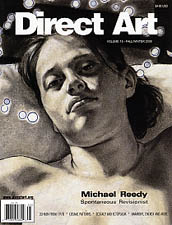 Bassem Yousri with Charlotte Rodenberg's Polar Bear
Bassem Yousri with Charlotte Rodenberg's Polar BearSome Rules and Hints
for Students and Teachers
By John Cage
RULE 1: Find a place you trust and then, try trusting it for a while
RULE 2: GENERAL DUTIES AS A STUDENT
Pull everything out of your teacher.
Pull everything out of your fellow students.
RULE 3: GENERAL DUTY AS A TEACHER
Pull everything out of your students.
RULE 4: Consider everything an experiment.
RULE 5: Be self disciplined.
This means finding someone smart or wise and choosing to follow them.
To be disciplined is to follow in a good way.
To be self-disciplined is to follow in a better way.
RULE 6: Follow the leader
Nothing is a mistake.
There is no win and no fail.
There is only make.
RULE 7: The only rule is work
If you work it will lead to something.
It is the people who do all of the work all the time who
eventually catch onto things.
You can fool the fans - but not the players.
RULE 8: Do not try to create and analyze at the same time. They are
different processes.
RULE 9: Be happy whenever you can manage it. Enjoy yourself. It is
lighter than you think.
RULE 10: We are breaking all the rules, even our own rules and how do we
do that?
By leaving plenty of room for 'x' qualities.
HELPFUL HINTS:
Always be around. Come or go to everything. Always go to classes. Read everything
you can get your hands on. Look at movies carefully and often. Save everything.
It may come in handy later.





















































